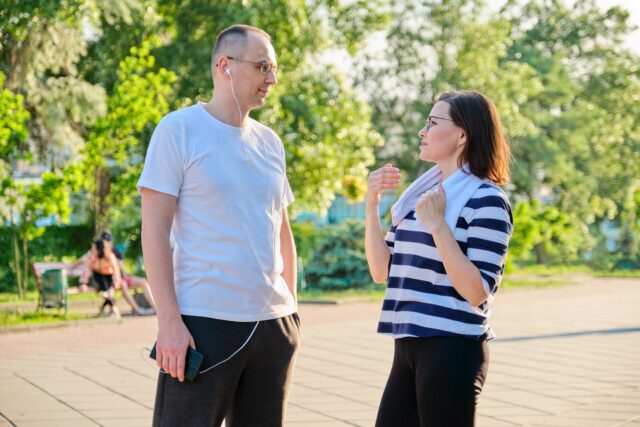Being a good listener is more than just staying quiet while someone else talks.

It’s an active process that involves genuine engagement, empathy, and thoughtful responses. Whether you’re chatting with mates or in a work meeting, these communication habits show you’re truly tuned in.
1. You maintain eye contact without staring.
 Source: Unsplash
Source: Unsplash When someone’s speaking, you keep your eyes focused on them, showing you’re engaged. But you’re not frozen in place — you blink naturally and occasionally glance away to avoid making them uncomfortable. Finding a balance helps the other person feel heard without feeling scrutinised, which might encourage them to open up more.
2. Your body language mirrors the other person’s energy.

If the person you’re listening to is excited, you lean in slightly and nod enthusiastically. When they’re sharing something serious, your posture becomes more composed. Such subtle mirroring shows you’re in tune with their emotions and fully present in the conversation, making them feel understood on a deeper level.
3. You use small verbal cues to show you’re following along.

As someone speaks, you occasionally interject with soft “mm-hmms” or “I see” to show you’re actively listening. These little acknowledgements encourage the other person to continue without interrupting their flow. It’s a simple yet effective way to show you’re engaged and processing what they’re saying.
4. You ask thoughtful follow-up questions.

When there’s a natural pause in the conversation, you ask questions that dig deeper into what the person has shared. These aren’t random queries, but ones that show you’ve been paying attention and want to understand more. It demonstrates genuine interest and helps the other person explore their thoughts further.
5. You paraphrase to ensure understanding.

After someone’s explained something, you might say, “So if I’m getting this right, you’re saying…” and summarise their main points. Doing this serves two purposes: it shows you’ve been listening carefully, and it gives the other person a chance to clarify anything you might have misunderstood.
6. You don’t jump in with your own story right away.

When someone shares an experience, you resist the urge to immediately chime in with a similar tale of your own. Instead, you give them space to fully express themselves. Having patience shows you value their perspective and aren’t just waiting for your turn to speak.
7. Your phone stays out of sight during conversations.

You keep your mobile tucked away when someone’s talking to you, avoiding the temptation to check notifications. It’s simple, yes, but it shows respect for the other person and demonstrates that you’re giving them your full attention. It creates a distraction-free environment for meaningful communication.
8. You remember details from past conversations.

In future chats, you bring up specific points or stories the person has shared before. This shows you weren’t just hearing their words, but actually absorbing and valuing the information. It makes people feel truly listened to and appreciated, strengthening your connection.
9. You’re comfortable with silence.

When there’s a lull in the conversation, you don’t rush to fill it. You understand that sometimes people need a moment to gather their thoughts or decide if they want to share more.
10. You offer empathy without trying to fix everything.

When someone shares a problem, your first response isn’t to jump in with solutions. Instead, you acknowledge their feelings and show understanding. Phrases like “That sounds really tough” or “I can see why you’d feel that way” validate their experience without dismissing their emotions.
11. You pick up on non-verbal cues.

You notice when someone’s body language doesn’t match their words, or when their tone suggests there’s more to the story. Without prying, you might gently ask, “Is there something else on your mind?” Your perceptiveness shows you’re attuned to the whole message, not just the spoken parts.
12. You admit when you don’t understand something.

If a concept or term is unfamiliar to you, you’re not afraid to ask for clarification. Being honest shows you’re genuinely trying to understand, rather than just nodding along. It also gives the other person a chance to explain things in a different way, potentially deepening their own understanding.
13. You keep the conversation focused.

When someone’s sharing something important, you help steer the discussion back on track if it starts to veer off course. This might mean gently redirecting after a tangent or asking a question that brings the focus back to the main point. It shows you’re invested in truly understanding their message.
14. You respect confidentiality.

When someone shares personal information, you don’t gossip about it later. Being so discreet builds trust and shows that you value the person and the conversation itself, not just the potential for juicy stories. It encourages people to open up to you more in the future.
15. You follow up on important conversations.

After a significant discussion, you might send a message or bring it up later to check in. Following up shows that the conversation stuck with you and that you care about the person’s ongoing situation. It transforms listening from a one-time event into an ongoing demonstration of support.




